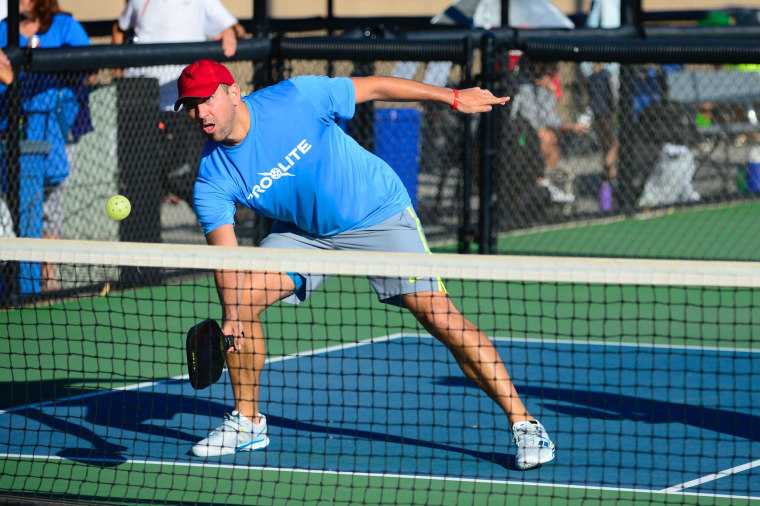
Tennis Elbow in Pickleball: Techniques to Avoid and Alleviate Pain
Introduction
Pickleball is a popular sport that combines elements of tennis, badminton, and table tennis. It's a fast-paced game that requires quick movements and repetitive arm motions. Unfortunately, these repetitive motions can sometimes lead to injuries, such as tennis elbow. In this article, we will explore techniques to avoid and alleviate the pain associated with tennis elbow in pickleball.
What is Tennis Elbow?
Tennis elbow, also known as lateral epicondylitis, is a condition characterized by pain and inflammation on the outside of the elbow. It is caused by overuse or repetitive strain on the tendons that connect the forearm muscles to the bony prominence on the outside of the elbow. While it is commonly associated with tennis players, it can also affect individuals who participate in other sports or activities that involve repetitive arm movements, such as pickleball.
Symptoms of Tennis Elbow
- Pain or tenderness on the outside of the elbow
- Weak grip strength
- Difficulty in gripping objects
- Pain when lifting or bending the arm
- Pain that radiates from the elbow to the forearm and wrist
How Does Pickleball Contribute to Tennis Elbow?
Pickleball involves repetitive swinging motions, particularly during serves and volleys. These motions place stress on the forearm muscles and tendons, increasing the risk of developing tennis elbow. The combination of quick movements and high-intensity gameplay can exacerbate this condition if proper techniques are not followed.
Proper Technique to Prevent Tennis Elbow in Pickleball
acepickleballzone.com what is the most common pickleball injuryWarm-up before playing: Before starting your pickleball session, it's essential to warm up your muscles and joints. Perform dynamic stretches and gentle exercises to increase blood flow and loosen up tight muscles.
Use proper equipment: Ensure that you are using a paddle with the correct grip size and weight. Using a paddle that is too heavy or has an improper grip can put unnecessary strain on your arm and increase the risk of developing tennis elbow.
Practice proper technique: Focus on using the correct form and technique while playing pickleball. This includes utilizing your entire body for power and not relying solely on your arm muscles. Engage your core, legs, and hips to generate force, reducing strain on your forearm.
Take regular breaks: Avoid overexertion by taking regular breaks during gameplay. This allows your muscles to rest and recover, reducing the risk of developing overuse injuries like tennis elbow.
Strengthen forearm muscles: Incorporate exercises that target the forearm muscles into your fitness routine. Strengthening these muscles can help prevent tennis elbow by improving their ability to absorb and distribute force.
How to Alleviate Tennis Elbow Pain in Pickleball?
If you are already experiencing pain from tennis elbow in pickleball, there are several techniques you can try to alleviate the discomfort and promote healing.
Rest and Ice
- Take a break from playing pickleball to allow your injured tendons to rest and heal.
- Apply ice packs or cold compresses to the affected area for 15-20 minutes at a time, several times a day. This can help reduce inflammation and numb the pain.
Compression
- Consider wearing a compression band or brace around your forearm during pickleball sessions. This can provide support to the tendons and help alleviate pain.
Physical Therapy
- Consult with a physical therapist who specializes in sports injuries. They can recommend specific exercises and stretches to relieve pain, strengthen the affected muscles, and improve flexibility.
Nonsteroidal Anti-Inflammatory Drugs (NSAIDs)
- Over-the-counter NSAIDs, such as ibuprofen or naproxen, can help reduce both pain and inflammation associated with tennis elbow. Follow the instructions on the packaging and consult with a healthcare professional if needed.
Corticosteroid Injections
- In some cases, your doctor may recommend corticosteroid injections to reduce inflammation and provide temporary pain relief. These injections should only be administered by a healthcare professional.
Extracorporeal Shockwave Therapy (ESWT)
- ESWT is a non-invasive treatment option that uses shockwaves to stimulate healing in damaged tendons. This therapy has shown promising results in relieving tennis elbow pain.
FAQs about Tennis Elbow in Pickleball
- Yes, by implementing proper technique, using the correct equipment, and taking regular breaks, you can reduce the risk of developing tennis elbow in pickleball.
- Some common mistakes include using an improperly sized or weighted paddle, relying solely on arm muscles for power, and playing for extended periods without breaks.
- The recovery time varies depending on the severity of the injury and individual factors. With proper rest and treatment, mild cases of tennis elbow can improve within a few weeks. However, more severe cases may take several months to heal completely.
- Yes, exercises such as wrist curls, forearm pronation/supination, and eccentric wrist extensions can help strengthen the forearm muscles and reduce the risk of developing tennis elbow.
- Yes, wearing a brace or support around the forearm can provide additional stability and support to prevent tennis elbow.
- If the pain persists or worsens despite self-care measures, or if you have difficulty performing daily activities, it is advisable to seek medical attention for a proper diagnosis and treatment plan.
Conclusion
Tennis elbow can be a frustrating and painful condition for pickleball players. However, by following proper techniques, using appropriate equipment, and taking necessary precautions, you can reduce the risk of developing tennis elbow and alleviate any existing pain. Remember to listen to your body, rest when needed, and seek professional help if the pain persists. Enjoy your pickleball game while keeping tennis elbow at bay!